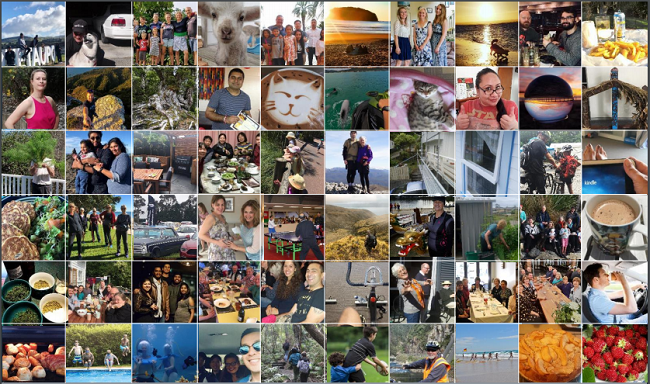An unexpected crystal ball: Good Life 2.0 Playbook
Jay Crangle caught up with SBC alumna Alison Herft this week to talk lockdown living and what consumers might be looking for post-Covid-19.

Our SBC alumna Alison Herft is famous for many things, including being the mastermind behind the Good Life 2.0 Playbook published last year. I know her better for her ornate ceilings (a regular feature at team meetings gone by) and her uncanny ability to predict the future.
During her years at SBC, she often spoke of how the food system would experience enormous change through future forces. She foretold that a health lens would make sustainability even more important for consumers. And now as we face the challenge of Covid-19, I can see just how right she was.
It’s the little things
When I caught up with our former oracle last week, we chatted about how lockdown has helped us appreciate the little things like spending time with whānau and being in nature. Things, incidentally, that it turned out really mattered to Kiwis in the Good Life 2.0 Playbook.
Developed with our friends at Colmar Brunton, this research found that people are increasingly aspiring to lifestyles that are about living smarter, cleaner and better. In my eyes, it is now a handbook for what consumers want from us in a Covid-19 and post-Covid-19 world.
Celebrating me time
The Playbook looks at the moments that matter to New Zealanders and found 39% of those are quieter moments spent by themselves. This includes taking a break, maintaining our homes and being in nature.
In this stay home/save lives era, this creates a unique opportunity for business to reflect this in their brand story. Messaging can reflect moments of stillness and solitude, and celebrate staying local. If much of what we value is quieter and more relaxed rather than bigger and better, how can brands mirror this?
Connecting with others
How many of us now recoil when TV characters hug? Social distancing has quickly become the new normal. But the Playbook documented that we are social creatures, and spending time with the people we love is what matters most to us.
The way in which we connect has changed – handshakes have become the East Coast Wave. Businesses can pivot their narratives to echo this. There is an opportunity to tell positive stories about friendship in digital times, or how distance needn’t be a barrier to connection.
Human to human marketing
The Good Life 2.0 Playbook is a window into what’s important to us, and therefore how brands can support people to live their values. It’s a tool for asking how your value proposition can reflect what’s best for people and planet. How can you make it easier for your consumers to live smarter, cleaner and better? What behaviours and messaging can your business demonstrate that connects with consumers in a meaningful way?
None of us has a crystal ball (well, maybe Ali does). But we do have insights into what really matters to us. This sets business in good stead to meet people where they’re at in this brave new world we’re creating.
Jay Crangle is the Manager, Strategy for SBC and is now managing the Consumer Decision Making programme.
Contact: Jay Crangle, Manager, Strategy, Sustainable Business Council
Phone:
Email:
